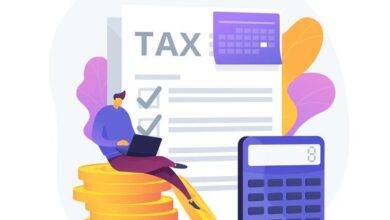The Steps Involved in Starting a Crypto Exchange

If you’re reading this, there’s a good chance you’ve wondered how to start a crypto exchange. And why not? With the meteoric rise of Bitcoin and other cryptocurrencies, there’s much money to make in the crypto world. But before you can start raking in the profits, you need to set up your exchange. This can be daunting, but don’t worry – we’re here to help! This post will walk you through everything you need to know about starting your own crypto exchange. So let’s get started!
-
What is a Сrypto Exchange, and What are Its Key Components?
A crypto exchange is a platform where users can buy, sell, and trade cryptocurrencies. Some exchanges only deal in one specific cryptocurrency (e.g., Bitcoin), while others offer a more diverse selection of coins. In order to start your own crypto exchange, you’ll need to build or acquire a few key components:
- A trading platform: This is the software that powers your exchange. It should be user-friendly and allow for fast and efficient trading.
- A payment gateway: This is how your users will deposit and withdraw fiat currency (e.g., USD, EUR, etc.) from your exchange. Popular options include PayPal, Stripe, and CoinPayments.
- A wallet: This is where you’ll store your cryptocurrencies. You can either use a hot wallet (i.e., one that is connected to the internet) or a cold wallet (i.e. one that is offline and more secure).
- Security: This is critical for any exchange. You’ll need to implement measures such as 2-factor authentication and KYC/AML compliance to ensure your platform is safe and compliant with regulations.
How to Start a Crypto Exchange in 8 Steps :
Now after you know what you need to start a crypto exchange let’s look at how to set up your exchange. Here’s a step-by-step guide:
-
Choose the Type of Exchange You Want to Create
The first step is to decide what type of exchange you want to create. There are two main types of exchanges:
Centralized exchanges: These are the most common types of exchange. They’re run by a single entity and typically offer a more user-friendly experience. However, they’re also more vulnerable to hacks and other security threats.
Decentralized exchanges: These are less common, but they’re growing in popularity due to their increased security. With a decentralized exchange, there is no central authority – instead, the platform is powered by smart contracts on a blockchain.
-
Select the Cryptocurrencies You Want to List on Your Exchange
Once you’ve decided on the type of exchange you want to create, you need to select the cryptocurrencies you want to list. There are a few factors to consider when choosing which cryptocurrencies to list on your exchange. The most important factors include popularity, trading volume, and liquidity. You should also make sure that you have the appropriate wallets for each coin.
Popularity: You’ll want to list popular coins to attract users to your exchange. The more popular a coin is, the more likely people will want to trade it.
Trading volume: Trading volume is a measure of how much activity there is around a particular cryptocurrency. The higher the trading volume, the more liquid a market is. When choosing coins to list, you’ll want to prioritize those with high trading volumes so that users can buy and sell easily.
Cryptocurrency liquidity: Liquidity refers to how quickly a coin can be bought or sold without affecting the price. When listing coins, you’ll want to prioritize those with high liquidity so that users can trade without affecting the market.
-
Choose a Jurisdiction for Your Exchange
The next step is to choose a jurisdiction for your exchange. This is important because it will determine the regulations you need to comply with. When deciding on a jurisdiction, you need to consider two things: the regulations surrounding cryptocurrency exchanges in that country and the infrastructure available to support your exchange.
Malta has very favorable regulations for cryptocurrency exchanges. The country is a member of the European Union (EU) and has been proactive in supporting the development of the blockchain industry. Malta has also developed a strong infrastructure to support blockchain businesses, with several incubators and accelerators, as well as a growing number of talent and service providers.
China, on the other hand, has banned cryptocurrency exchanges. This is because the Chinese government views cryptocurrencies as a threat to its fiat currency, and exchange trading activity would be seen as contributing to this threat. As a result, there is no infrastructure in place to support cryptocurrency exchanges in China.
-
Obtain the Necessary Licenses and Permits
If you want to operate a legal and compliant crypto exchange, you’ll need to obtain the necessary licenses and permits. You will need to obtain a money transmitter license in order to operate a legal and compliant crypto exchange. This will vary depending on the jurisdiction in which you are operating but typically includes a money transmitter license. In order to obtain this license, you will need to go through the proper channels and submit the necessary paperwork. Once you have obtained this license, you can operate your crypto exchange legally.
-
Choose Your Cryptocurrency Exchange Platform
Now that you’ve researched and planned, it’s time to choose the cryptocurrency exchange platform that’s right for you. There are many different platforms available, so it’s important to compare their features and select the one that best meets your needs.
Some of the things you may want to consider include blockchain development company
- Ease of use: You’ll want an easy-to-use and easy-to-navigate platform, especially if you’re new to crypto trading.
- Security: Make sure the platform you choose has robust security measures in place to protect your funds.
- Fees: Compare the fees charged by different platforms to find an affordable one.
- Customer support: Choose a platform that offers excellent customer support in case you need help.
-
Set Up Your Exchange
Once you’ve chosen the platform you want to use, it’s time to set up your exchange. This process will vary depending on the platform you’re using but typically involves creating an account and funding it with crypto. Once your account is funded, you’ll be able to start trading.
-
Promote Your Exchange
Now that your exchange is up and running, you need to promote it to get users. There are a number of ways to do this, including:
Listing your exchange on directories: There are numerous online directories that list cryptocurrency exchanges. Make sure your exchange is listed on as many of these as possible.
Advertising: You can use online advertising platforms like Google AdWords or Facebook Ads to reach potential users.
Content marketing: Creating informative blog posts or videos about your exchange can help attract users who are looking for more information about the crypto space.
Social media: Promote your exchange on social media platforms like Twitter and Telegram or others depending on your demands and audience .
-
Keep Your Exchange Secure
As a cryptocurrency exchange operator, it’s your responsibility to keep your platform secure. There are a number of ways to do this, including:
Using a reputable hosting provider: Make sure your exchange server is secure and reliable.
Implementing security measures: Use 2-factor authentication and other security measures to protect user accounts.
Keeping your software up to date: Regularly update your software to ensure you have the latest security patches.
Conclusion
Starting a cryptocurrency exchange can be a complex and challenging process, but it’s also an exciting opportunity to enter the growing crypto space. By following the steps outlined in this guide, you can give yourself the best chance of success.





